Brasil Nuova Tavola
First edition of first map of Brasil
Detail
Date of first edition: 1561
Date of this map: 1561
Dimensions (not including margins): 18,2 cm x 24,5 cm
Dimensions (including margins): 22,5 x 32 cm
Condition: Very good
Condition rating: A
Verso: blank
From: La Geografia di Claudio Tolomeo, Venice
In stock
Brasil Nuova Tavola: a rare first edition
The first map of Brazil. First state, with the copperplate running off the top edge.
West is at the top as often with early maps of Brasil. In a ptolemaic way, the toponyms of the inland coast are inscribed in such a way that they mark the desired coastline. In the upper left is de Rio de la Plata (River Plate), the Silver River. Some coastal placenames are given, but very little interior detail. An erupting volcano is shown in the Mullobamba Province, considered the source of the Amazon River, here named Marañón River. The river is so mighty, that it results in a sea of fresh water into the ocean (Mar dolce). Trees are depicted all over the map, to emphasize the lands are covered with dense forests and jungle. In the west it says “Terra non descoperta”. A text refers to cannibalism: “Gli indi natij di questi paesi mangiano carne humana” (The Indians of these lands eat human meat).
Only a few Inca cities in Peru Provincia, including Cusco and Caxamalca are mentioned. The Amazon winds down like a snake, but does not come into contact with Plata’s water system. At the top right you can see a tip of West Africa and at the bottom the Strecho de Magellanes. The image of many islands in the Atlantic Ocean is striking. For example, Y. de Fernando Lorena (now Fernando de Noronha), an archipelago of 21 islands, discovered during an expedition from 1503 (sponsored by the Lisbon merchant Fernão de Loronha). Amerigo Vespucci was part of this expedition. Between 1503 and 1512, the consortium led by Loronha had a monopoly on trade in Brazil. This group was particularly interested in the wood of the Brazil tree. The name of the larger area, which was first called Santa Cruz or Vera Cruz, was replaced early on by Terra do Brasil. Off the coast of Africa, Ruscelli depicts a few islands of the Cape Verde archipelago, four of which are named: (San) Tiago, Lucia, Sal and Mayo.
One of the modern maps from Girolamo Ruscelli’s edition of Ptolemy’s “La Geografia”, first published in 1561 in Venice. Contrary to most of the other maps in Ruscelli’s atlas, this map is not a copy of an earlier map by Gastaldi, but an original work by Ruscelli. Girolamo Ruscelli’s edition of Ptolemy’s Geographia included newly engraved copperplates by Giulio and Livio Sanuto. The curious fact is that this map is one of two that were engraved on the same plate, printed and than separated for the book. This can be seen in the atlas by the fact that the plate mark of the map runs off the top of the page. In 1574 a new plate was used which lasted until the final edition of 1599.
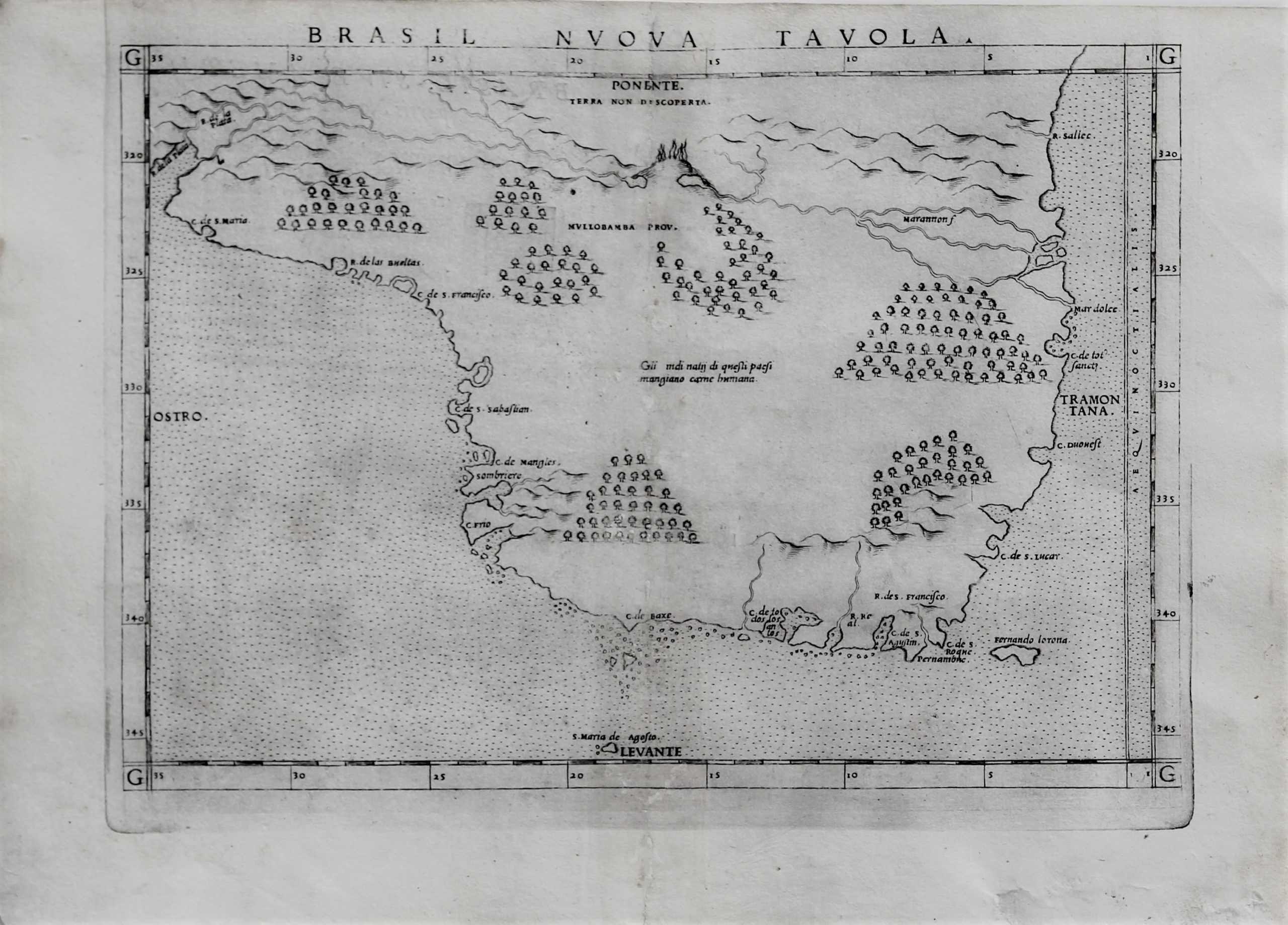
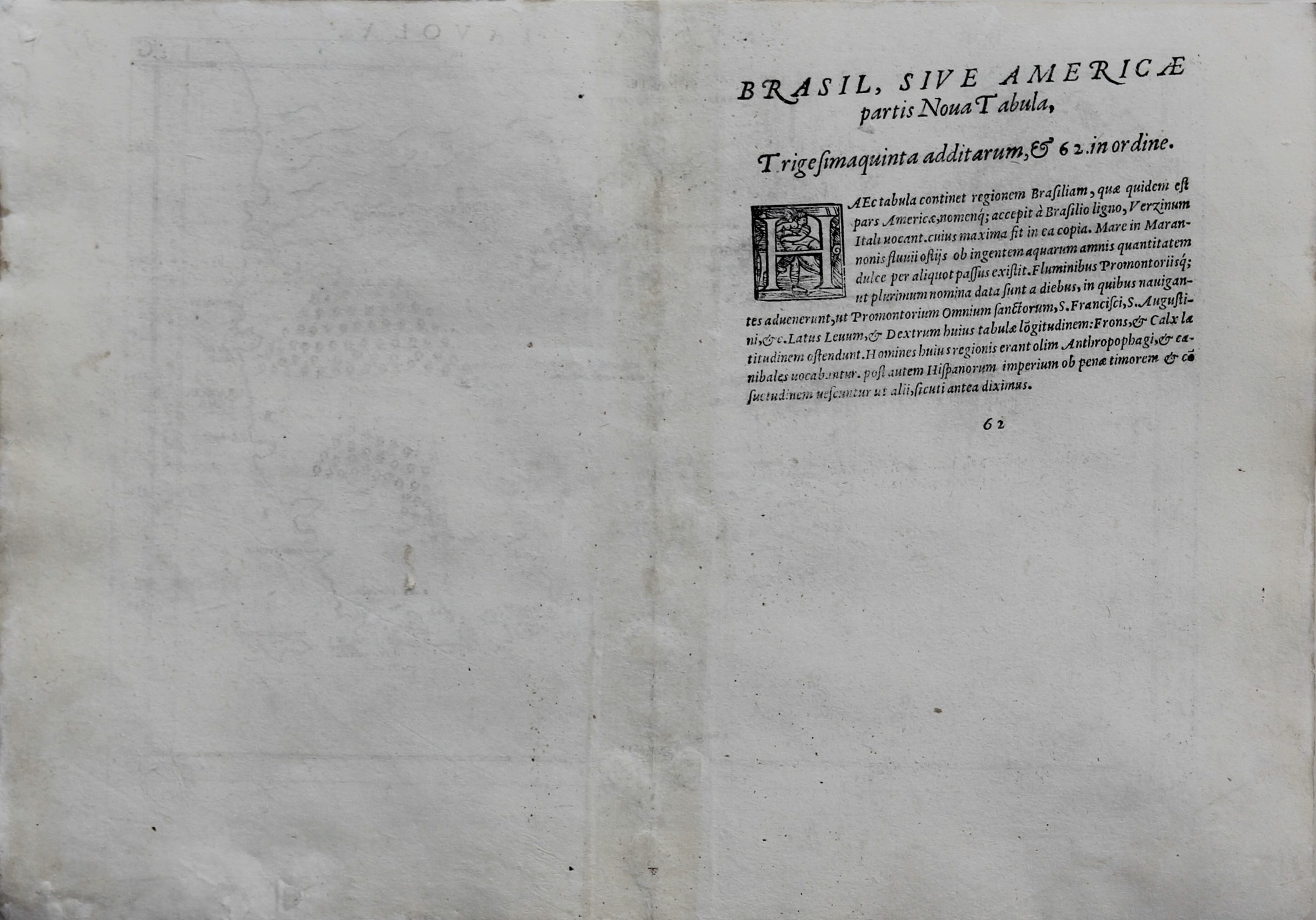
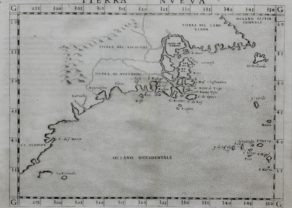
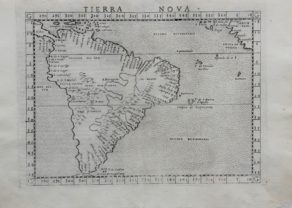
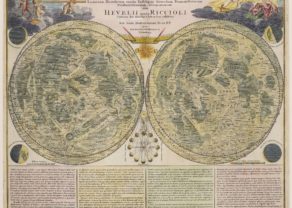
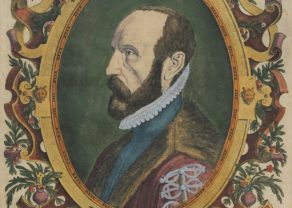
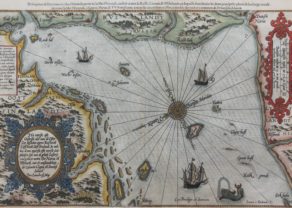
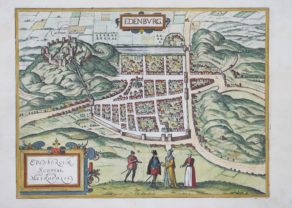
Ruscelli
Girolamo Ruscelli (1504 Viterbo -1566 Venice), an Italian Alchemist, Physician and cartographer, was editor of a revised and expanded Italian edition of Ptolemy’s ‘Geographia’, published as ‘La Geografia di Claudio Tolomeo. The newly engraved maps were based, generally, on those compiled by Giacomo Gastaldi for the Venice miniature atlas edition of 1548.
Ruscelli’s atlas was issued several times between 1561 and 1599 by the following publishers
– Venice, Vincenzo Valgrisi, 1561
– Venice, Vincenzo Valgrisi, 1562
– Venice, G. Zileti, 1564
– Venice, G. Zileti, 1574
– Venice, Heirs of Melchior Sessa, 1598-99
The Ruscelli and Gastaldi atlases were the most comprehensive atlases produced between Martin Waldseemüller’s ‘Geographia’ of 1513, and Abraham Ortelius ‘Theatrum’ of 1570. The significance of the Gastaldi and Ruscelli atlases cannot be overestimated. They defined the known geography of the world for decades. These atlases also reintroduced the use of copper engraving into the service of cartography, which was dominated by woodcut printing after several not very succesful attempts to print from copper in the 15th century. The Gastaldi and Ruscelli atlases proved that maps could be beautifully engraved on copper. As it was a harder material than wood, it was harder to engrave but also gave the ability to render much more detail. The Gastaldi and Ruscelli atlases marked a turning point in the history of cartography, from then on the majority of cartographic works used this medium.
“Ruscelli was editor of a revised and expanded edition of Ptolemy’s Geographia which was issued in Venice several times between 1561 and the end of the century.
The newly angraved maps were based, generally, on those compiled by Giacomo Gastaldi for the Venice edition of 1548.”
(Moreland & Bannister).